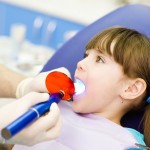
Dental treatment and pain are often associated. Local anaesthesia is routinely used to control pain related to dental treatment, however, almost 40% of children report postoperative dental pain. In medicine the use of pre-operative analgesia to manage postoperative pain is well established while in dentistry it is used in oral surgery and in children undergoing general anaesthesia (GA). However there are no recommendations for those children having treatment without GA.
The aim of this updated Cochrane review is to assess the effects of preoperative analgesics for intraoperative or postoperative pain relief (or both) in children and adolescents undergoing dental treatment without general anaesthesia or sedation.
Methods
Searches were conducted in the Cochrane Oral Health’s Trials Register, the Cochrane Central Register of Controlled Trials (CENTRAL), Medline, Embase, LILACS, the ISI Web of Science, ClinicalTrials.gov and the World Health Organization (WHO) International Clinical Trials Registry Platform with no restriction on regarding language or date of publication. Randomised controlled clinical trials (including cluster-RCTs and cross-over trials where the order was randomised) of analgesics given before dental treatment compared to placebo or no analgesics in children and adolescents up to 17 years of age were considered. Studies involving children and adolescents having dental treatment under sedation (including nitrous oxide/oxygen) or general anaesthesia were excluded. The main outcome measure was postoperative pain (either expressed as intensity of pain or presence or absence of pain).
Two reviewers independently selected studies, abstracted data and assessed risk of bias. The overall quality of the evidence was assessed using the GRADE criteria. Standard Cochrane analytical approaches were used.
Results
- 5 parallel group RCTs involving a total of 190 patients were included.
- 3 studies were considered to be at high risk of bias and 2 at unclear risk.
- 3 studies considered at preoperative analgesics and their effect on postoperative pain following restorative and extraction treatments under local anaesthesia (LA).
- 2 studies looked at preoperative analgesics before orthodontic separator placement without LA
- 3 studies compared paracetamol with placebo, 2 providing data from 100 patients for meta-analysis showing no evidence of benefit in taking paracetamol preoperatively (52% reporting pain in the placebo group versus 42% in the paracetamol group) and risk ratio (RR) = 0.81 (95%C; 0.53 to 1.22). One study reported no adverse events, they were not mentioned in the other two.
- 4 trials compared ibuprofen with placebo. Data from 2 studies (85 patients) were pooled, which included participants who were having orthodontic separator replacement without a general anaesthetic. There was a statistically significant mean difference in severity of postoperative pain of -13.44 (95% CI -23.01 to -3.88; P = 0.006) on a visual analogue scale (0 to 100).
- This indicated a probable benefit for preoperative ibuprofen before this orthodontic procedure. However, both studies were at high risk of bias do the quality of the evidence is low. One study reported adverse events (one participant from the ibuprofen group and one from the placebo group reporting a lip or cheek biting injury).
Conclusions
The authors concluded: –
From the available evidence, we cannot determine whether or not preoperative analgesics are of benefit in paediatric dentistry for procedures under local anaesthetic. There is probably a benefit in using preoperative analgesics prior to orthodontic separator placement. The quality of the evidence is low. Further randomised clinical trials should be completed with appropriate sample sizes and well defined outcome measure
Comments
With research suggesting that almost 40% of children complain of pain following dental treatment identifying ways of managing this could lead to a reduction in fear and anxiety related to dental care under local anaesthetic. The Cochrane review has been conducted following their usual high quality approach and only 5 studies involving a small number of children could be included. Unfortunately this does not provide sufficient evidence to determine the effectiveness of this intervention. Although there is a suggestion of a benefit to those having orthodontic appliances fitted. Clearly high quality randomised controlled trials of sufficient size are required to assess the efficacy of preoperative analgesia in children and adolescents having routine dental treatments.
Links
Primary paper
Ashley PF, Parekh S, Moles DR, Anand P, MacDonald LCI. Preoperative analgesics for additional pain relief in children and adolescents having dental treatment. Cochrane Database of Systematic Reviews 2016, Issue 8. Art. No.: CD008392. DOI: 10.1002/14651858.CD008392.pub3
Other references

Do analgesics before dental treatment reduce post-op pain in children? https://t.co/FTTNoEA2pn
Do analgesics before dental treatment reduce post-op pain in children? https://t.co/zwcA4EXpAX
Do analgesics before dental treatment reduce post-op pain in children? https://t.co/fcOcdxSL1A
Inconclusive evidence for giving painkillers to children before dental treatment https://t.co/fcOcdxSL1A
Evidence for giving analgesics to children before dental treatment inconclusive https://t.co/fcOcdxSL1A
Evidence inconclusive for giving analgesics to children before dental treatment https://t.co/fcOcdxSL1A
Don’t miss-Do analgesics before dental treatment reduce post treatment pain in children? https://t.co/fcOcdxSL1A
[…] Do analgesics before dental treatment reduce post treatment pain in children? […]